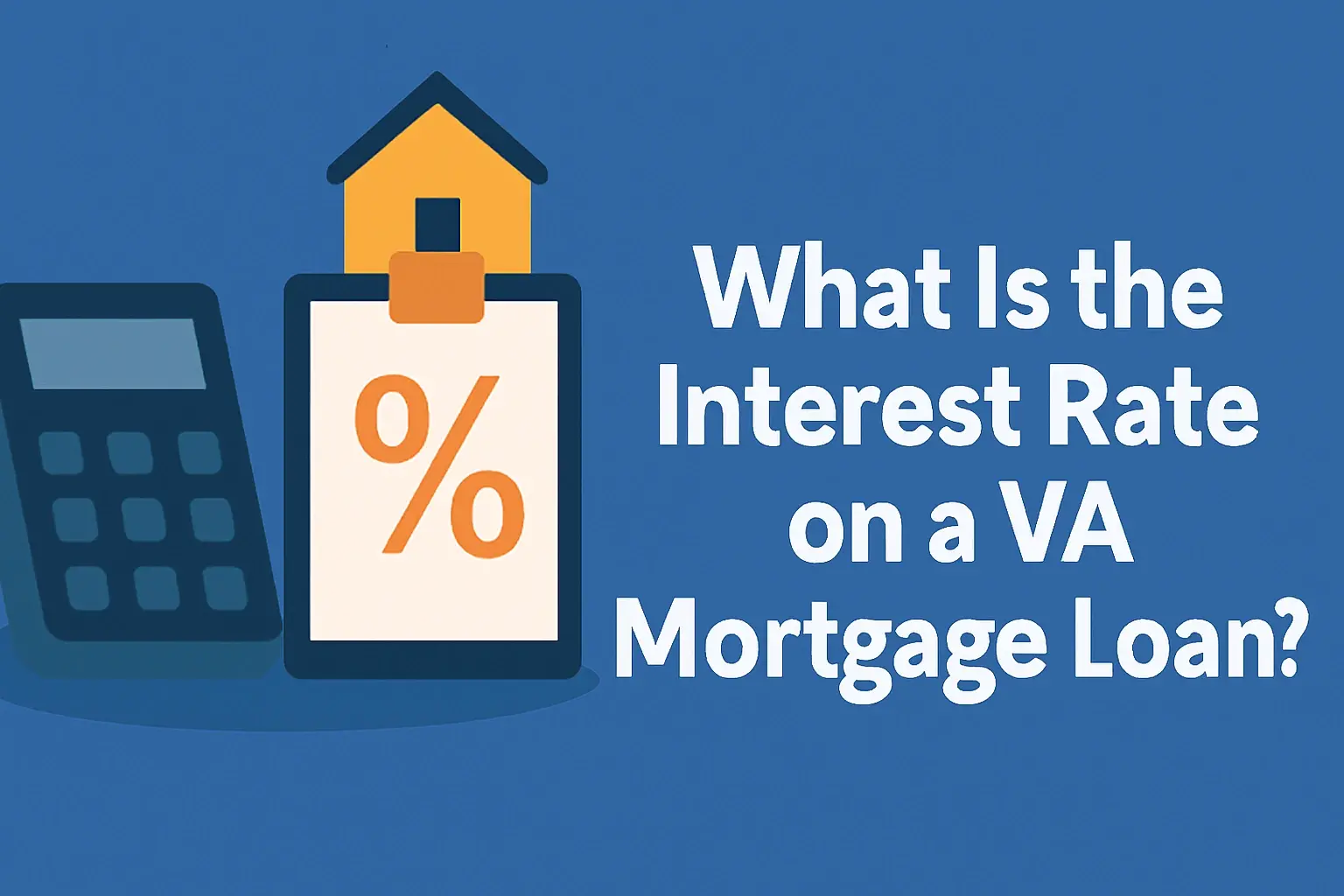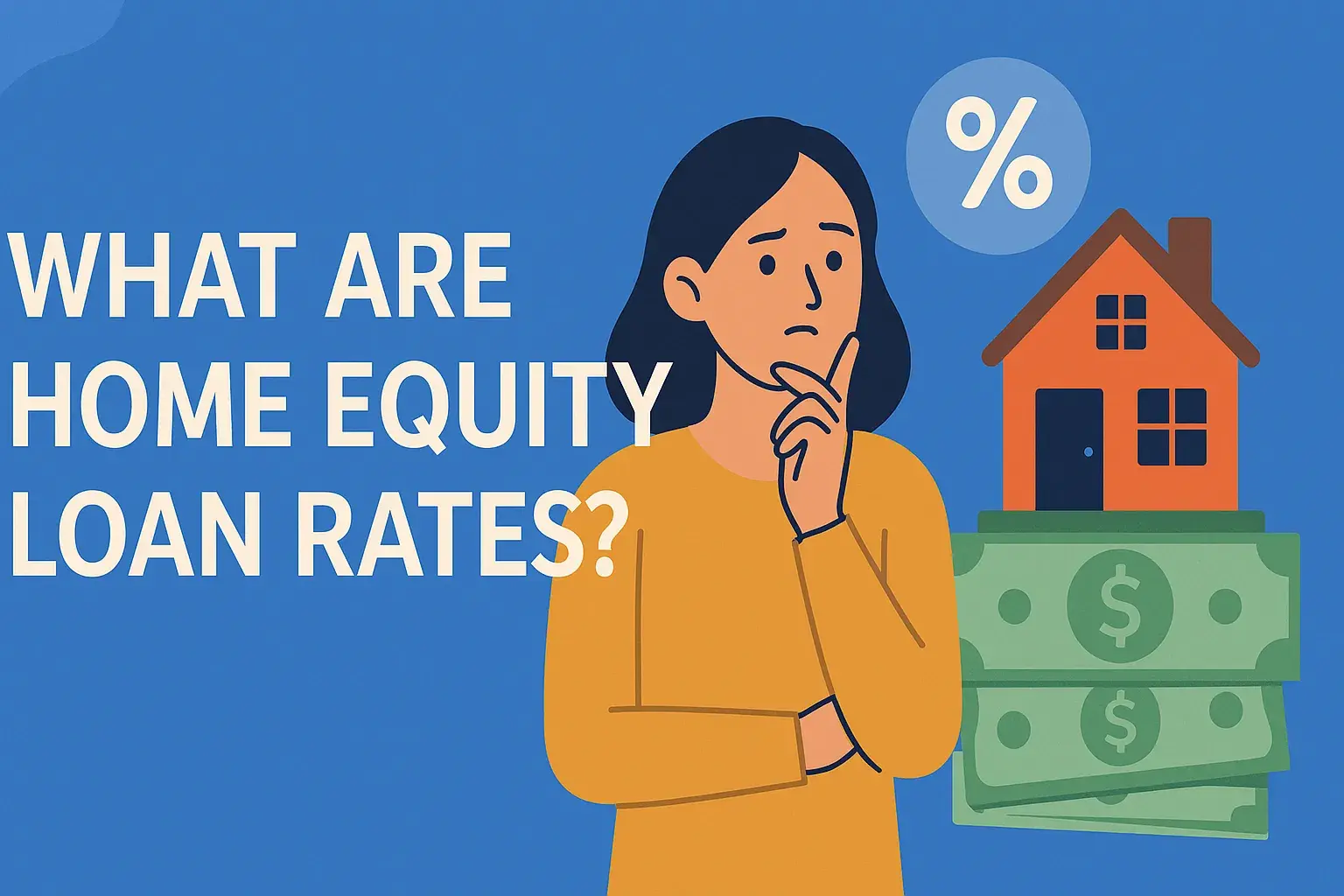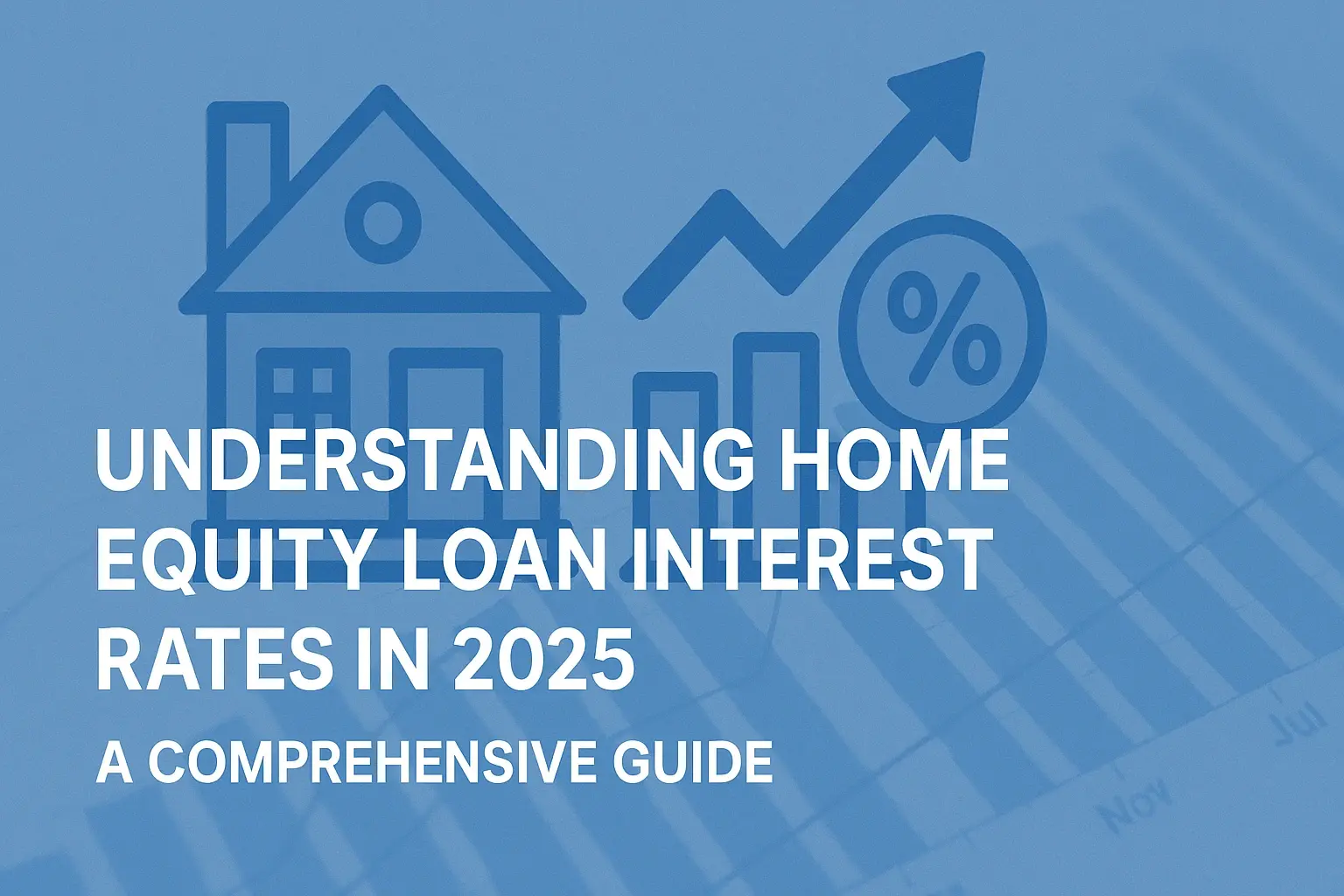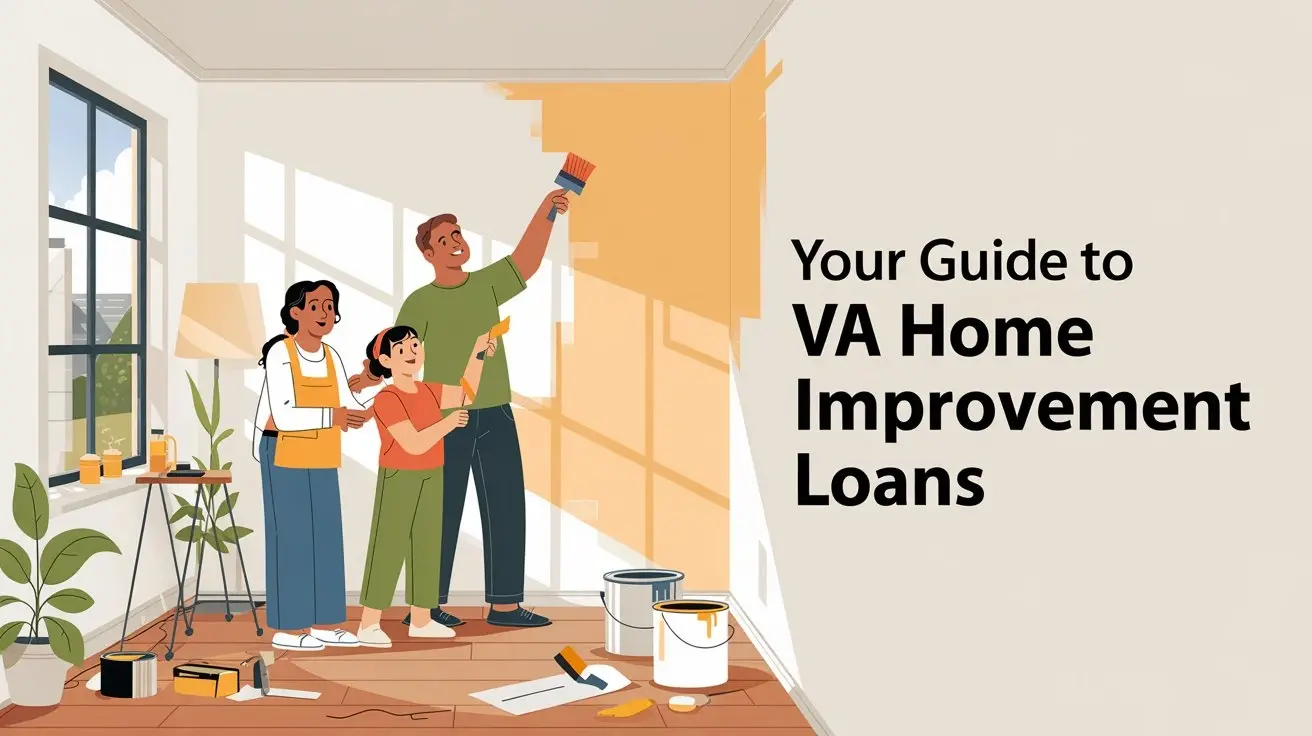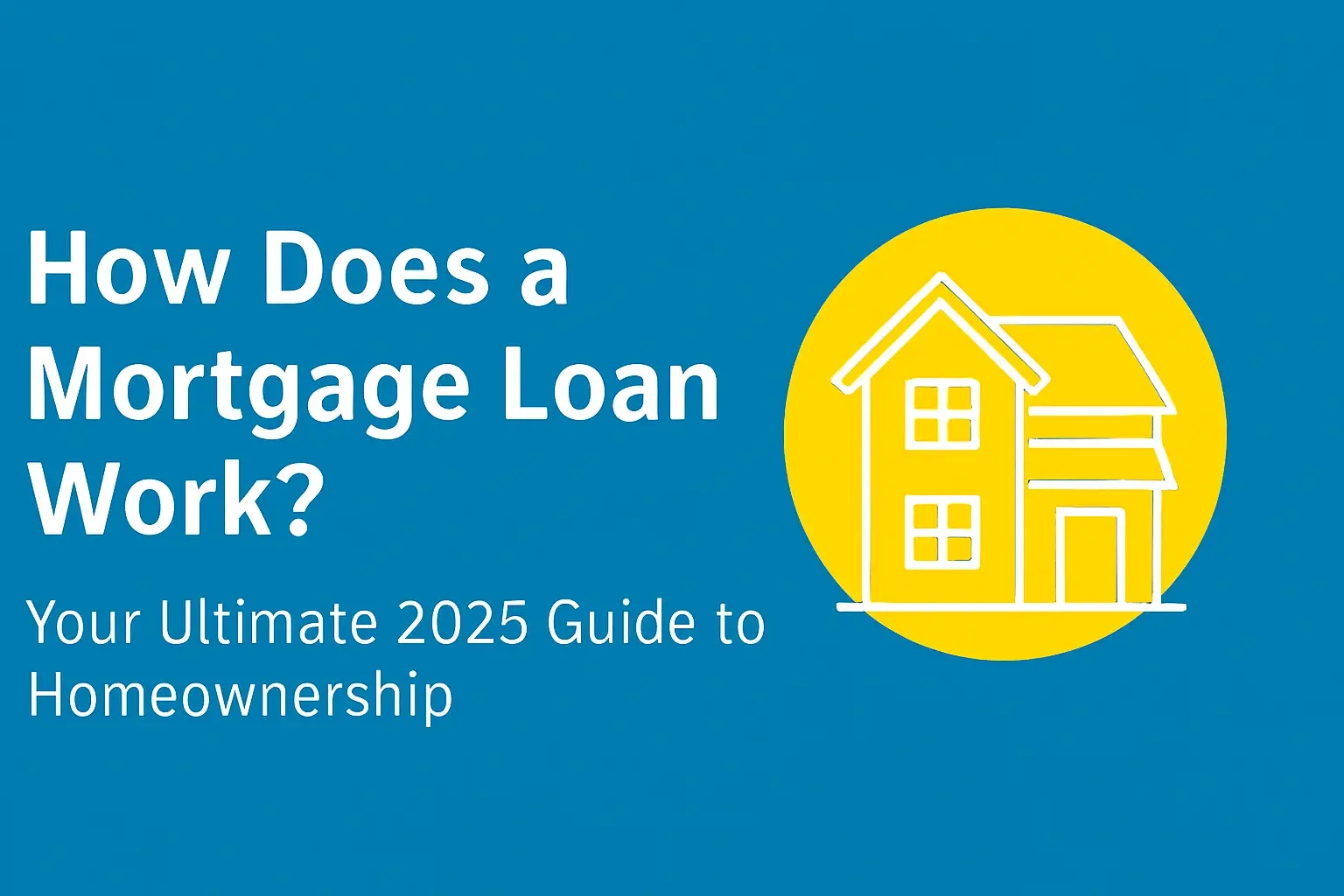-
Posted on: 25 Jul 2024
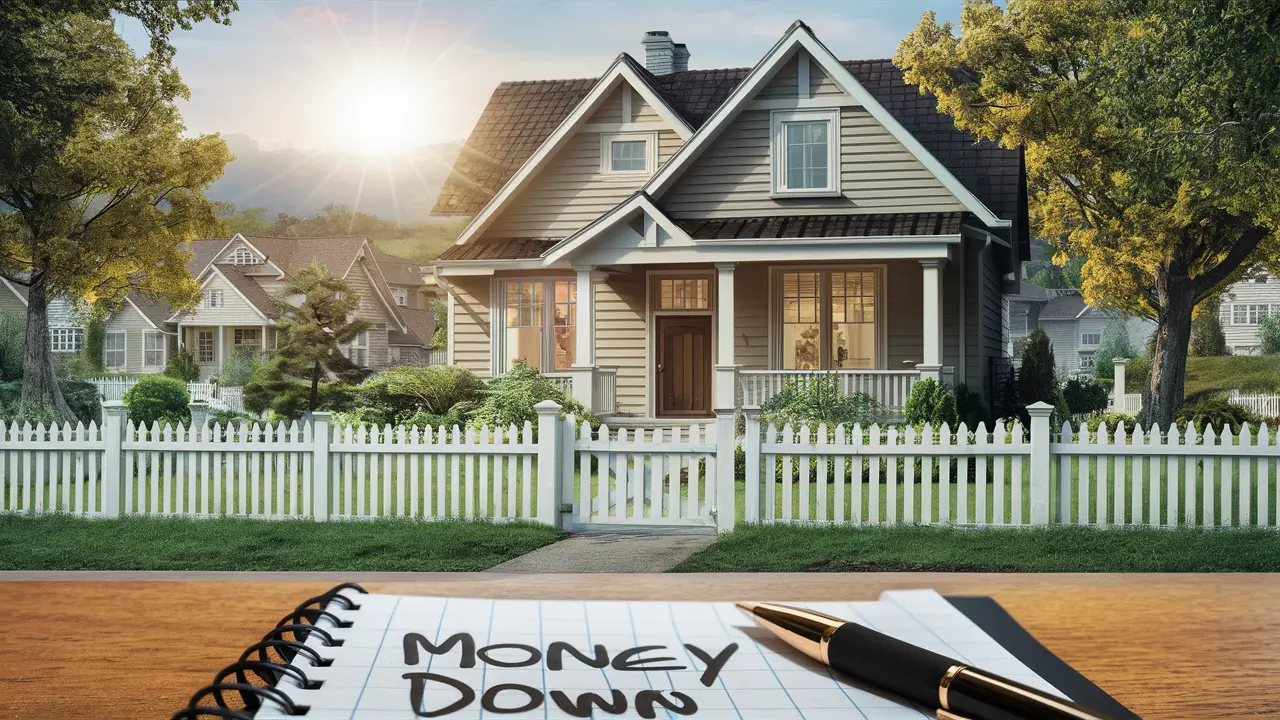
-
Buying a house with no money down can seem like a dream come true, offering a pathway to homeownership without a hefty upfront payment. This guide explores the realities, benefits, and significant risks involved, helping you make an informed decision in 2025.
Understanding "No Money Down" Mortgages
The concept of buying a house with "no money down" is alluring, especially for first-time homebuyers or those with limited savings. However, it's crucial to understand what this truly entails. In most cases, "no money down" doesn't mean absolutely zero cost. It typically refers to mortgages that do not require a traditional down payment, which traditionally could range from 5% to 20% of the home's purchase price. Instead of a lump sum upfront, these loans might allow you to finance the entire purchase price, or the majority of it, through the loan itself. This can be achieved through various government-backed programs or specialized loan products. It's essential to differentiate between genuinely zero-down options and those that might require some form of upfront cash, even if it's less than a conventional down payment. Understanding the nuances of these programs is the first step in determining if this route is viable for your financial situation.
For many, the prospect of homeownership is hindered by the significant hurdle of saving for a down payment. This is where "no money down" mortgages enter the conversation. These loan products are designed to make homeownership more accessible by reducing or eliminating the need for a large upfront cash investment. However, this accessibility often comes with trade-offs, and it's vital to weigh the advantages against the potential disadvantages. In 2025, the landscape of mortgage lending continues to evolve, with various options available to prospective buyers. This section will delve into the core principles behind these loans, setting the stage for a deeper exploration of their implications.
What is a Down Payment and Why is it Important?
A down payment is the portion of the home's purchase price that a buyer pays upfront in cash. It's a fundamental part of most mortgage transactions. The size of the down payment directly impacts the loan amount, your monthly mortgage payments, and the overall cost of the loan. Lenders typically view a larger down payment as a sign of lower risk. This is because it demonstrates the borrower's financial commitment and reduces the lender's exposure to potential losses if the borrower defaults on the loan. A substantial down payment also means you're borrowing less money, which translates to lower interest payments over the life of the loan and potentially a lower interest rate. Furthermore, a larger down payment can help you avoid private mortgage insurance (PMI), an additional monthly cost required by lenders when the loan-to-value (LTV) ratio exceeds 80% for conventional loans.
The importance of a down payment cannot be overstated. It's a critical factor in your ability to secure a mortgage, the terms of that mortgage, and your long-term financial well-being as a homeowner. While "no money down" options circumvent the traditional down payment requirement, understanding its role is crucial for appreciating the full picture of home financing.
How "No Money Down" Mortgages Work
"No money down" mortgages operate by allowing borrowers to finance a larger percentage of the home's purchase price. Instead of a traditional down payment, the loan covers 100% of the value. This is often facilitated through government-backed programs designed to encourage homeownership. For instance, the U.S. Department of Agriculture (USDA) and the U.S. Department of Veterans Affairs (VA) offer programs that can allow for 100% financing for eligible borrowers. Other options might involve combining a primary mortgage with a second loan or grant to cover the down payment and closing costs. In essence, the lender is taking on more risk, which is why these loans often come with specific eligibility requirements and sometimes higher interest rates or fees to compensate for that increased risk. It's a mechanism to bridge the gap for individuals who have the income and creditworthiness to handle monthly payments but lack the upfront capital for a traditional down payment.
Potential Benefits of Buying a House with No Money Down
The primary allure of "no money down" mortgages is, of course, the ability to purchase a home without a substantial upfront cash outlay. This can be a game-changer for many individuals and families who are otherwise financially capable of managing a mortgage but struggle to accumulate the savings needed for a traditional down payment. Let's explore the key advantages.
Accelerated Path to Homeownership
For many aspiring homeowners, saving for a down payment can take years, delaying their entry into the housing market. "No money down" options can significantly shorten this timeline. If you meet the eligibility criteria, you could potentially purchase a home much sooner than you would otherwise be able to. This allows you to start building equity sooner, benefit from potential property appreciation, and gain the stability and personal fulfillment that comes with owning your own home. In a rapidly appreciating market, delaying homeownership can mean paying more for a home later or being priced out of the market altogether. Therefore, an accelerated path can be a significant financial and personal advantage.
Preserving Cash Reserves
Even when a down payment isn't required, it's always wise to have cash reserves for emergencies. Buying a home involves unexpected expenses, such as repairs, maintenance, and potential job loss. By opting for a "no money down" mortgage, you can keep your savings intact to cover these unforeseen costs. This financial cushion provides security and peace of mind, ensuring you can handle life's uncertainties without jeopardizing your homeownership. Maintaining liquid assets is crucial for financial resilience, and these mortgage options allow you to do just that while still achieving your homeownership goals.
Potential for Higher Loan Amounts
In some scenarios, "no money down" options might enable borrowers to qualify for larger loan amounts than they would with a traditional down payment. This is because the loan-to-value (LTV) ratio is 100%. While this might seem beneficial, it's crucial to ensure the loan amount is still manageable within your budget. A higher loan amount means higher monthly payments and more interest paid over time. However, for those who have been priced out of certain markets due to down payment requirements, this could open up possibilities for purchasing a home in a desired area or a larger property.
Leveraging Government Programs
Many "no money down" mortgage options are backed or insured by government agencies. These programs are designed to make homeownership accessible to a broader range of individuals, including veterans, rural residents, and those with moderate incomes. By utilizing these programs, borrowers can benefit from favorable terms, lower interest rates, and reduced fees that might not be available through conventional lending. Understanding these government-backed options is key to unlocking the potential of zero-down financing.
The Significant Risks and Drawbacks of No Money Down Mortgages
While the benefits of "no money down" mortgages are attractive, it's imperative to understand the substantial risks and drawbacks associated with them. These loans often come with higher costs and increased financial vulnerability. Ignoring these potential pitfalls can lead to significant financial hardship down the line.
Higher Monthly Payments
When you finance 100% of the home's purchase price, you are borrowing the maximum possible amount. This directly translates to higher monthly mortgage payments compared to a loan with a down payment. The principal and interest portion of your payment will be larger, and you will also likely have to pay for Private Mortgage Insurance (PMI) or a similar mortgage insurance premium, as your loan-to-value (LTV) ratio will be 100%. This increased monthly obligation can strain your budget and leave less room for other expenses or savings.
Private Mortgage Insurance (PMI) or Mortgage Insurance Premium (MIP)
For conventional loans where the down payment is less than 20%, PMI is typically required. For FHA loans, which are a common route for lower down payments (though not strictly "no money down" in all cases, they often have very low down payment options), a Mortgage Insurance Premium (MIP) is mandatory. This insurance protects the lender in case you default on the loan. PMI or MIP adds a significant amount to your monthly mortgage payment, increasing your overall housing cost. This cost can persist for many years, sometimes for the life of the loan, depending on the loan type and your equity. In 2025, the cost of PMI/MIP can range from 0.5% to 1.5% of the loan amount annually, paid monthly.
Increased Risk of Foreclosure
With a higher loan amount and potentially higher monthly payments, borrowers using "no money down" mortgages are at a greater risk of foreclosure. If you face unexpected financial hardship, such as job loss or a medical emergency, and you have little to no equity in your home, it becomes much harder to sell the property for enough to cover the outstanding loan balance. This can lead to a foreclosure, which has severe and long-lasting negative consequences for your credit score and financial future. In 2025, economic uncertainties can exacerbate this risk.
Less Equity at the Start
When you make a down payment, you immediately build equity in your home. With a "no money down" mortgage, your initial equity is zero or very close to it. This means you have no financial buffer if home values decline. If the market experiences a downturn, you could find yourself "underwater," owing more on your mortgage than your home is worth. This can make it difficult to sell, refinance, or even rent out your property if needed. Building equity takes time, and starting with none puts you in a more vulnerable position.
Higher Interest Rates and Fees
Lenders perceive "no money down" loans as higher risk. To compensate for this increased risk, they may offer higher interest rates compared to loans with substantial down payments. Additionally, some "no money down" programs might have higher origination fees or other associated costs. Over the life of a 30-year mortgage, even a small increase in the interest rate can add tens of thousands of dollars to the total cost of your home. It's crucial to compare offers carefully and understand all the fees involved.
Difficulty Selling or Refinancing
As mentioned, starting with little to no equity can make selling your home challenging, especially if the market is not in your favor. If you owe more than the home's value, you would need to bring cash to the closing table to cover the difference, which defeats the purpose of a "no money down" purchase. Similarly, refinancing can be more difficult. Many refinancing options require a certain amount of equity to be approved, and if you're underwater, you may be unable to take advantage of lower interest rates or change your loan terms.
Potential for Over-Borrowing
The accessibility of "no money down" loans can sometimes tempt borrowers to purchase a home that is beyond their financial means. Without the discipline of saving for a down payment, it can be easier to stretch your budget to qualify for a larger loan. This can lead to a situation where your mortgage payments consume a disproportionate amount of your income, leaving you with little flexibility and increasing your risk of default. A responsible approach involves ensuring the monthly payments are comfortably affordable, not just technically achievable.
Exploring Different "No Money Down" Mortgage Options in 2025
The landscape of mortgage lending offers several pathways to homeownership with little to no upfront cash. These options are often facilitated by government programs or specific lender initiatives. Understanding the nuances of each can help you identify the best fit for your circumstances.
VA Loans for Veterans and Service Members
The U.S. Department of Veterans Affairs (VA) guarantees a portion of loans made to eligible veterans, active-duty service members, and surviving spouses. A key benefit of VA loans is that they often require no down payment and do not have a maximum loan limit (though the VA's guarantee has limits, which can affect the down payment requirement for larger loan amounts). These loans also typically feature competitive interest rates and no private mortgage insurance. Eligibility is determined by service history. In 2025, VA loans remain one of the most powerful tools for military-affiliated individuals seeking to purchase a home with zero down.
USDA Loans for Rural Areas
The U.S. Department of Agriculture (USDA) offers a Rural Development Guaranteed Housing Loan Program. This program allows eligible borrowers to finance up to 100% of the home's appraised value, meaning no down payment is required. To qualify, the property must be located in an eligible rural or suburban area, and the borrower must meet specific income limits. USDA loans also come with a guarantee fee and an annual mortgage insurance premium, which are financed into the loan. These loans are an excellent option for those looking to purchase in designated rural or suburban communities.
FHA Loans: Low Down Payment Options
While not strictly "no money down," Federal Housing Administration (FHA) loans are a popular choice for borrowers with limited savings. FHA loans allow for down payments as low as 3.5% of the purchase price. For borrowers who can access down payment assistance programs, this 3.5% could potentially be covered, effectively making it a no-money-down scenario. FHA loans are insured by the FHA, making them accessible to borrowers with lower credit scores than typically required for conventional loans. However, they do require both an upfront Mortgage Insurance Premium (MIP) and an annual MIP, which adds to the monthly cost.
Conventional Loans with Low Down Payment Programs
Many lenders offer conventional loan programs that allow for down payments as low as 3%. Some of these programs are designed for specific groups, such as first-time homebuyers, and may have income limitations. While these require a small down payment, they can sometimes be combined with down payment assistance grants or second mortgages to cover that initial cost, bringing the out-of-pocket expense closer to zero. Conventional loans with low down payments typically require Private Mortgage Insurance (PMI) until the loan-to-value ratio reaches 80%.
Down Payment Assistance (DPA) Programs
Numerous state and local governments, as well as non-profit organizations, offer Down Payment Assistance (DPA) programs. These programs can provide grants or low-interest loans to help cover down payment and closing costs. In many cases, DPA funds can be used in conjunction with FHA or conventional loans, effectively reducing or eliminating the upfront cash needed. Eligibility for DPA programs often depends on income, first-time homebuyer status, and the location of the property. These programs are a critical resource for making homeownership more affordable.
Seller Financing and Lease Options
In some niche situations, you might encounter seller financing, where the seller acts as the lender, or a lease-option agreement, where you rent a home with the option to buy it later. These arrangements can sometimes be structured with minimal upfront cash. However, they are less common and often require careful negotiation and legal review. Seller financing can sometimes allow for flexible terms, including a zero-down structure, but it's crucial to have a real estate attorney involved.
Comparison of "No Money Down" Options
Here's a simplified comparison of the most common "no money down" or very low down payment options available in 2025:
Feature VA Loans USDA Loans FHA Loans Conventional (Low Down) Down Payment Requirement 0% (typically) 0% (typically) 3.5% (can be covered by DPA) 3% or 5% (can be covered by DPA) Eligibility Veterans, active-duty, surviving spouses Low-to-moderate income in eligible rural/suburban areas Low-to-moderate income, lower credit scores Varies by program, often first-time buyers Mortgage Insurance No PMI (Funding Fee applies) Yes (Upfront Guarantee Fee & Annual MIP) Yes (Upfront MIP & Annual MIP) Yes (PMI required if LTV > 80%) Interest Rates Competitive Competitive Competitive, often slightly higher than conventional Market-driven, can vary widely Loan Limits No limit (VA guarantee applies) Income limits apply, loan limits vary by county Set by FHA, vary by county Conforming loan limits apply How to Qualify for a No Money Down Mortgage
Qualifying for a "no money down" mortgage requires meeting specific criteria, which can vary significantly depending on the loan program. While the upfront cash requirement is reduced or eliminated, lenders still need assurance that you can repay the loan. Here are the key factors lenders will assess:
Credit Score Requirements
Your credit score is a critical indicator of your creditworthiness. For VA and USDA loans, there isn't a strict minimum credit score set by the government, but individual lenders often impose their own requirements, typically in the mid-600s or higher. FHA loans are more lenient, often allowing scores as low as 580 with a 3.5% down payment, and even lower with a larger down payment (though this contradicts the "no money down" premise). Conventional low down payment programs usually require higher scores, often 620 or above. A higher credit score generally leads to better interest rates and loan terms.
Income and Employment History
Lenders need to see a stable and sufficient income to cover your monthly mortgage payments, property taxes, homeowners insurance, and any other associated costs. They will typically require at least two years of consistent employment history, often in the same industry. Your debt-to-income ratio (DTI) is a crucial metric, showing the percentage of your gross monthly income that goes towards paying your debts. For most mortgage programs, lenders prefer a DTI of 43% or lower, though some programs may allow for slightly higher ratios if other factors are strong.
Debt-to-Income Ratio (DTI)
Your DTI is calculated by dividing your total monthly debt payments (including the proposed mortgage payment, car loans, student loans, credit card minimums, etc.) by your gross monthly income. A lower DTI indicates that you have more disposable income and are less likely to struggle with debt obligations. For "no money down" loans, lenders will scrutinize your DTI carefully. For example, VA loans often allow for higher DTIs (up to 50% or more) due to the VA guarantee, while USDA and FHA loans have specific DTI limits, and conventional loans are generally stricter. Understanding your DTI is a vital step in assessing your eligibility.
Property Eligibility
The type and condition of the property you intend to purchase are also critical. VA and USDA loans have specific property requirements. For instance, VA loans require the property to be the borrower's primary residence and must meet minimum property requirements (MPRs) to ensure it's safe, sound, and sanitary. USDA loans are restricted to properties in designated rural or suburban areas. FHA loans also have MPRs. Conventional loans are generally more flexible regarding property types, but the property still needs to appraise at a value that supports the loan amount.
Loan-Specific Requirements
Each loan program has its own set of unique requirements. For VA loans, you'll need a Certificate of Eligibility (COE). For USDA loans, you must meet income limits and purchase in an eligible area. FHA loans require specific mortgage insurance premiums. Conventional loans may have specific first-time homebuyer education requirements. Thoroughly researching and understanding the specific requirements of the "no money down" option you are considering is paramount.
The Role of a Mortgage Broker or Lender
Navigating the complexities of "no money down" mortgages can be challenging. A qualified mortgage broker or lender can be an invaluable resource. They can help you understand your eligibility, compare different loan products, guide you through the application process, and identify potential DPA programs. They have the expertise to match you with the most suitable loan option based on your financial profile and homeownership goals.
Alternatives to Buying a House with Zero Down Payment
While "no money down" mortgages offer a pathway to homeownership, they are not the only solution for those with limited savings. Exploring alternatives can provide a more financially sound and less risky approach. These alternatives often involve strategic saving, creative financing, or focusing on more affordable housing options.
Saving for a Traditional Down Payment
The most straightforward alternative is to diligently save for a traditional down payment. Even a 5% or 10% down payment can significantly reduce your monthly payments, lower your interest rate, and help you avoid or minimize PMI. Creating a dedicated savings plan, cutting unnecessary expenses, and exploring high-yield savings accounts can accelerate your progress. Consider setting realistic savings goals and tracking your progress to stay motivated.
Gift Funds from Family
Many lenders allow borrowers to use gift funds from family members to cover down payment and closing costs. This is a common way for parents or other relatives to help loved ones achieve homeownership. Lenders typically require a gift letter stating that the money is a gift and does not need to be repaid. This can be a substantial help in accumulating the necessary funds for a down payment, even on conventional loans.
Shared Equity Programs
Some programs, often offered by local housing authorities or non-profits, allow you to purchase a home with a reduced upfront investment by sharing a portion of the home's future appreciation with the program provider. In exchange for a lower initial cost, you agree to share a percentage of the profit when you eventually sell the home. These programs can make homeownership more accessible without the long-term burden of PMI or a higher loan amount.
House Hacking
House hacking involves purchasing a multi-unit property (like a duplex, triplex, or fourplex) and living in one unit while renting out the others. The rental income from the other units can help cover your mortgage payment, making your own housing costs significantly lower. Many government-backed loans, including FHA and VA loans, can be used to purchase owner-occupied multi-unit properties with low down payments, effectively reducing your out-of-pocket expenses.
Rent-to-Own Agreements
A rent-to-own agreement, also known as a lease-option, allows you to rent a home for a period with the option to purchase it at a predetermined price within a specific timeframe. A portion of your monthly rent may be credited towards the down payment or purchase price. This can give you time to save for a down payment while securing your desired home. However, it's crucial to have a well-drafted contract reviewed by an attorney.
Purchasing a Less Expensive Home
Consider adjusting your expectations and looking for homes in more affordable neighborhoods or smaller properties. Buying a less expensive home will naturally require a smaller down payment and result in lower monthly mortgage payments, making it more manageable to save for the upfront costs.
Is Buying a House with No Money Down a Good Idea for You?
Deciding whether to pursue a "no money down" mortgage is a significant financial decision that requires careful consideration of your personal circumstances. There's no one-size-fits-all answer, as the viability of this approach depends heavily on your financial health, risk tolerance, and long-term goals. Let's break down the key questions you should ask yourself to determine if this path is right for you in 2025.
Assess Your Financial Stability
The most critical factor is your overall financial stability. Do you have a secure and consistent income? Have you built up an emergency fund that can cover at least 3-6 months of living expenses, including your potential mortgage payment, property taxes, and insurance? Without these reserves, taking on a mortgage with no equity and potentially higher monthly payments can be extremely risky. A "no money down" loan amplifies the consequences of financial setbacks. If your income is stable and you have a robust emergency fund, the risk is mitigated. If not, it's advisable to focus on saving for a down payment and building your financial safety net.
Evaluate Your Risk Tolerance
Are you comfortable with a higher level of financial risk? "No money down" mortgages inherently carry more risk than those with substantial down payments. You'll have less equity, higher monthly payments, and a greater chance of being underwater if property values decline. If you are naturally risk-averse or have significant financial obligations, this might not be the best option. However, if you have a high tolerance for risk, a solid income, and a clear plan for building equity over time, it might be a calculated gamble.
Consider Your Long-Term Goals
What are your long-term housing and financial goals? If your primary objective is to enter the housing market as quickly as possible to start building equity and benefit from potential appreciation, and you have a solid plan to manage the higher payments and risks, a "no money down" option might align with your goals. However, if your priority is financial security, minimizing debt, and having ample liquid assets, then saving for a larger down payment might be a more prudent approach. Think about how homeownership fits into your broader financial plan.
Understand the True Cost
It's essential to look beyond the absence of an upfront down payment and understand the total cost of homeownership with these loans. Factor in higher monthly payments, mortgage insurance premiums, potentially higher interest rates, and the long-term cost of borrowing more money. Use mortgage calculators to compare the total cost of a "no money down" loan versus a loan with a 5%, 10%, or 20% down payment over 15 and 30 years. This comprehensive analysis will reveal the true financial implications.
The Importance of a Budget
A detailed and realistic budget is non-negotiable when considering any mortgage, especially a "no money down" one. You need to know precisely how much you can comfortably afford for a monthly mortgage payment, including principal, interest, property taxes, homeowners insurance, and potential HOA fees. Don't just rely on what a lender says you can qualify for; determine what you can truly afford without undue financial strain. Living paycheck to paycheck with a mortgage is a precarious position.
When it Might Be a Good Idea
Buying a house with no money down could be a good idea if:
- You are a qualified veteran or active-duty service member eligible for a VA loan.
- You are looking to purchase a home in an eligible rural or suburban area and meet USDA income requirements.
- You have a strong credit score, stable income, and a low debt-to-income ratio, making you a low-risk borrower.
- You have substantial cash reserves for emergencies and are comfortable with higher monthly payments.
- You plan to stay in the home for a significant period, allowing ample time to build equity and ride out potential market fluctuations.
- You are utilizing down payment assistance programs effectively to cover any residual upfront costs and minimize your loan-to-value ratio.
When it is Likely Not a Good Idea
It is likely not a good idea if:
- You have limited or no emergency savings.
- Your income is unstable or you anticipate significant financial changes in the near future.
- You have a high debt-to-income ratio.
- You have a low credit score and are relying on programs with very lenient credit requirements.
- You plan to move within a few years, as you may not build enough equity to cover selling costs.
- You are not comfortable with the increased financial risk and potential for higher monthly payments.
- You are stretching your budget to afford the monthly payments.
Ultimately, the decision to buy a house with no money down requires a thorough self-assessment and a clear understanding of the associated risks and rewards. Consulting with a trusted financial advisor and a reputable mortgage lender is highly recommended to make an informed choice that aligns with your financial well-being.
In conclusion, while the prospect of buying a house with no money down in 2025 is enticing, it's a path fraught with significant financial risks. While programs like VA and USDA loans offer genuine zero-down opportunities, and FHA or conventional loans can be supplemented by down payment assistance, these options often come with higher monthly payments, mortgage insurance premiums, and increased exposure to market downturns. Carefully assess your financial stability, risk tolerance, and long-term goals. Prioritize building an emergency fund and understanding the true, long-term cost of borrowing the maximum amount. For many, saving for a traditional down payment or exploring alternatives like gift funds or house hacking may offer a more secure and sustainable route to homeownership.
